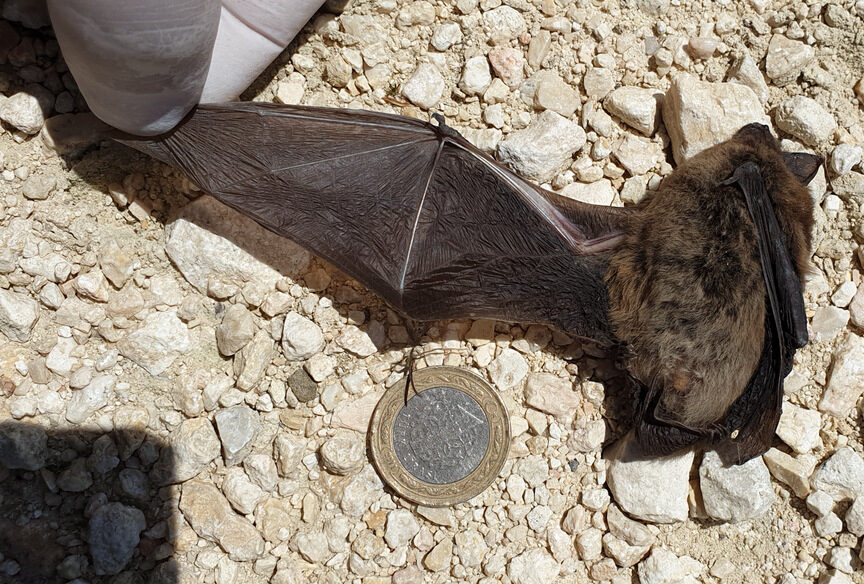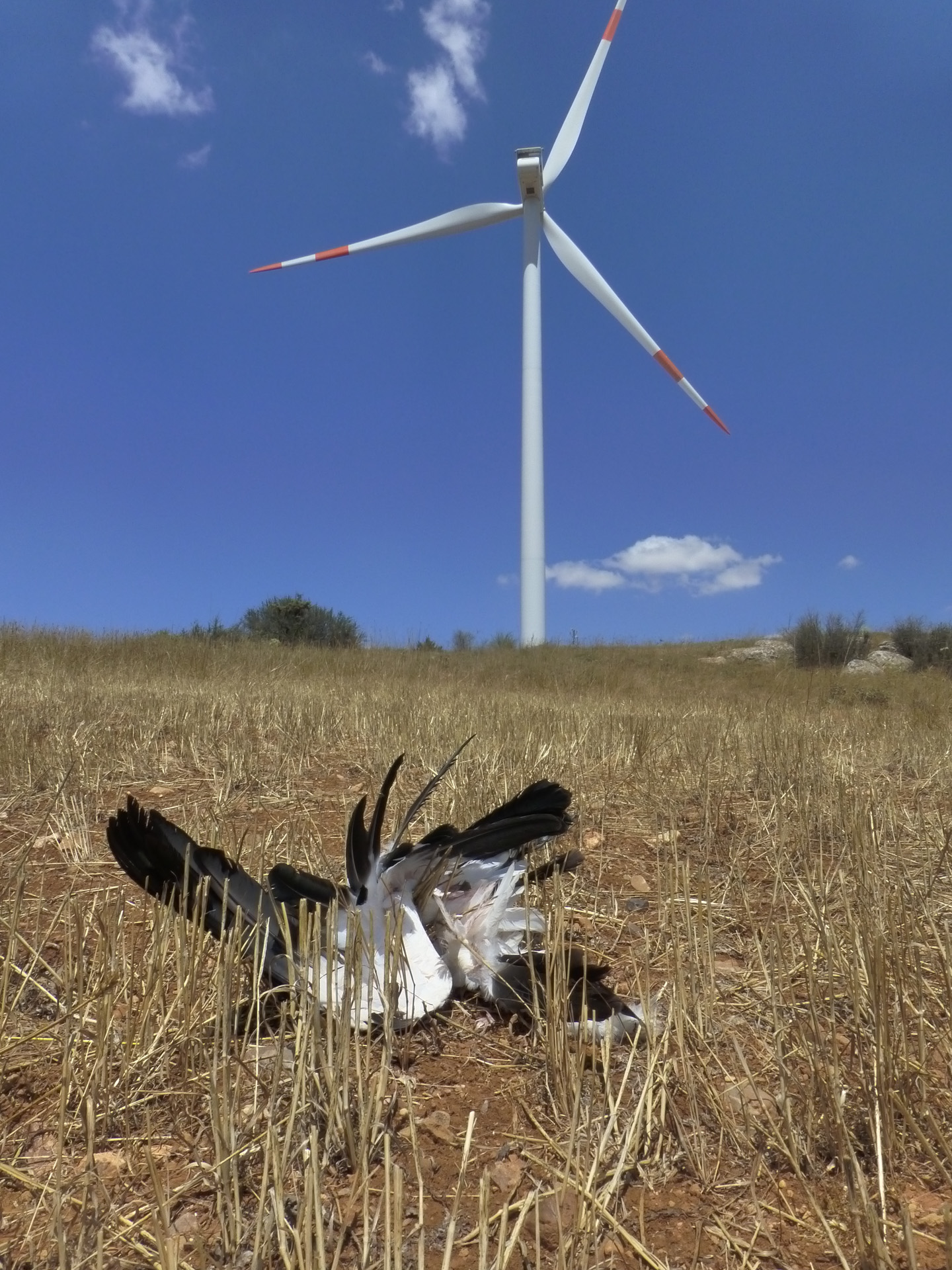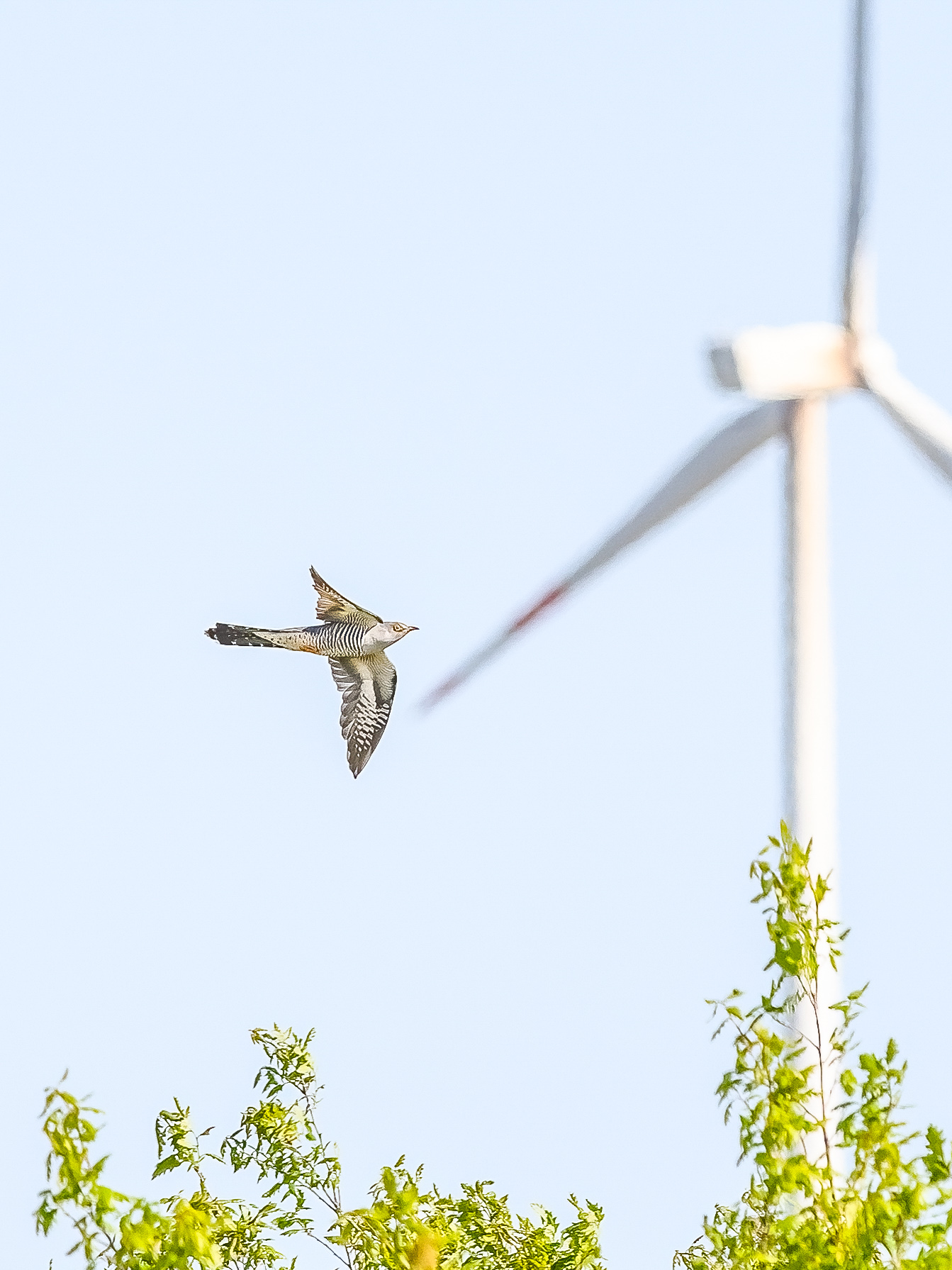Although wind farms are generally considered as causing the least disturbance to the environment for energy production, they might be responsible for significant rates of bird and bat mortality through collisions. It is quite a challenge for birds and bats to escape a blade tip spinning at 300 km/h after all! Bats populations are susceptible to local extirpations due to their low reproductive rates.
Reliable estimations of bird and bat mortality rates are required in order to assess the biodiversity impact of the project. Yearly mortality estimates become an important metric for the success of mitigation measures down the road. Estimates are made in 3 steps:
- Routine carcass searches are conducted and all carcasses are documented in detail
- Adjustment factors are determined through experimental studies, to account for surveyor efficiency and carcass persistency
- Results of routine searches are fed into statistical analysis models along with the adjustment factors
Surveyors scan turbine pads and roads for bird and bat carcasses during routine monitoring. Routine monitoring should run for the entire period of the year that the animals are active (beginning of spring through end of autumn in temperate zones) every week and at every turbine.
Observed number of carcasses represent only a fraction of the actual rate of mortality. At the second step, factors that can influence how many carcasses are observed by the surveyor are determined:
- Many carcasses fall outside the search area and disappear under plant cover
- Surveyors have differing efficiencies in what fraction of the observable carcasses they actually locate
- Carcasses are removed from the environment by scavenger (e.g. fox, crow etc) activity
Routine monitoring and adjustment factor data are analysed using statistical methods approved in international guidelines to arrive at reliable mortality estimates. The final result can be interpreted as the actual rate of mortality for birds and bats at a project site. Mortality estimates can also be made on taxa (bird or bat), time period (season, month, week) and location (turbine) bases. This allows us to get answers for what, where and when questions.
These estimates can help in planning strategies to protect migratory birds.
As for achieving reduction in bat mortality, the most effective method is increasing the cut-in speed of the turbines. Bats prefer to be active during lower wind speeds. This is also when energy production is low. An increase in cut-in speed therefore can have a significant impact on bat mortality while also keeping the effect on energy production low.
Additionally, bat detectors placed at nacelle height are able to be integrated into the SCADA systems and can get triggered only when there is high bat activity. Smart detector systems can keep production losses low.





